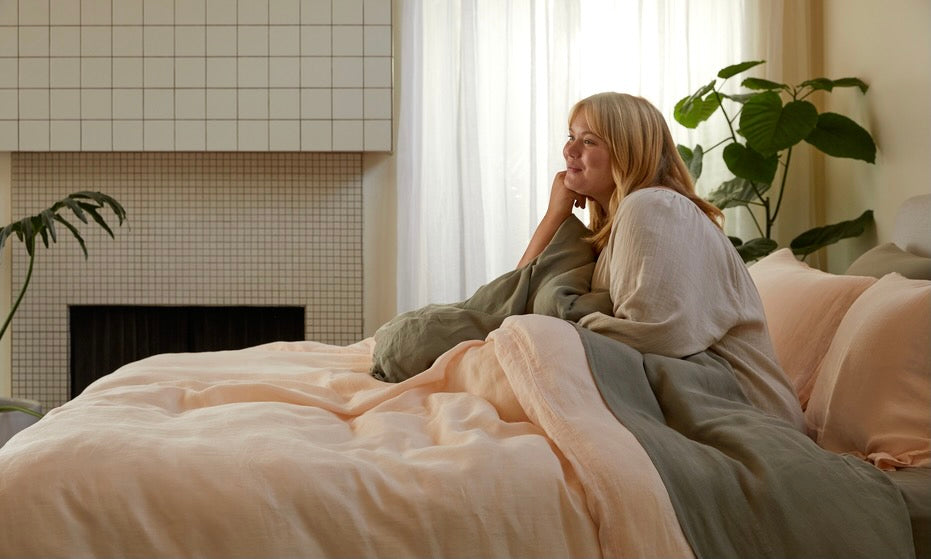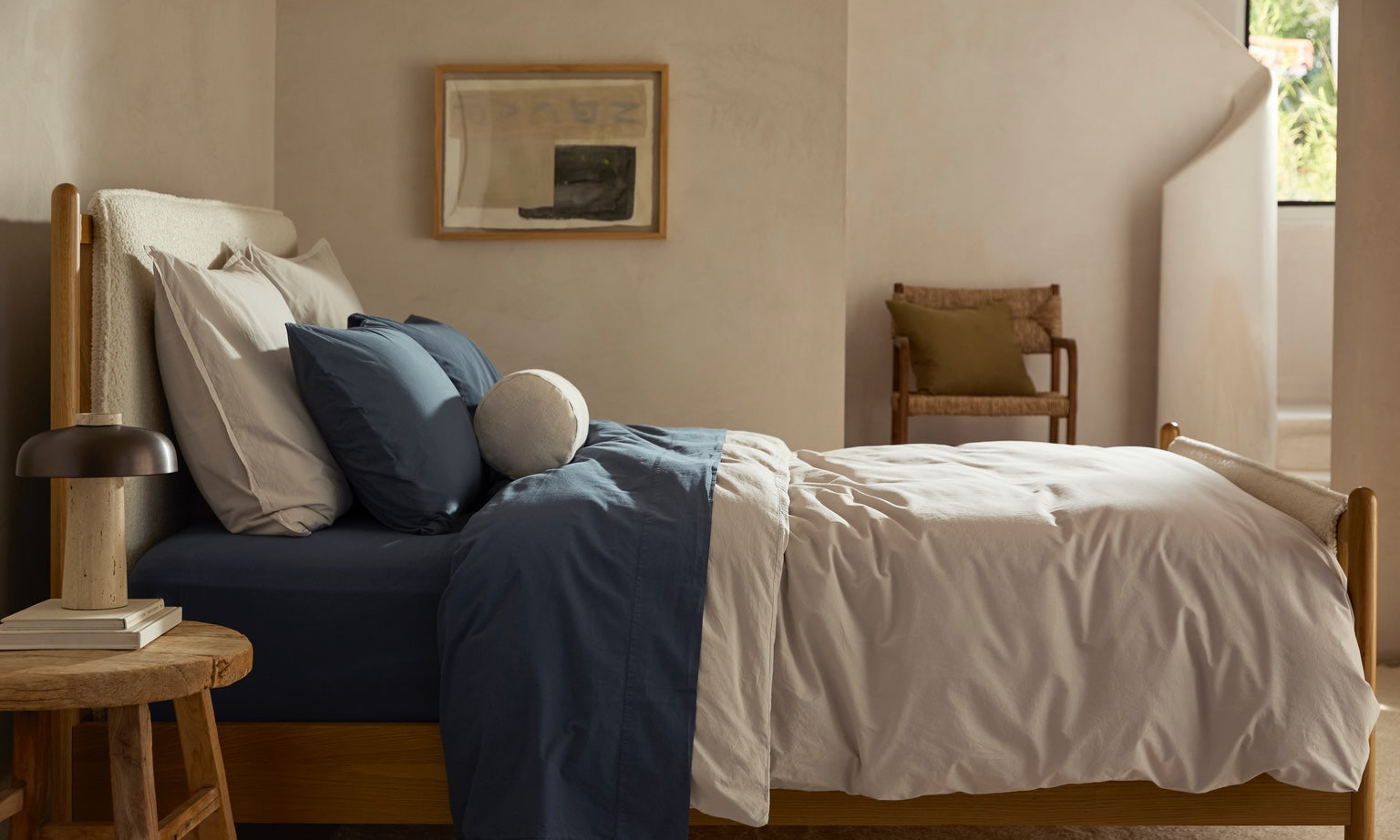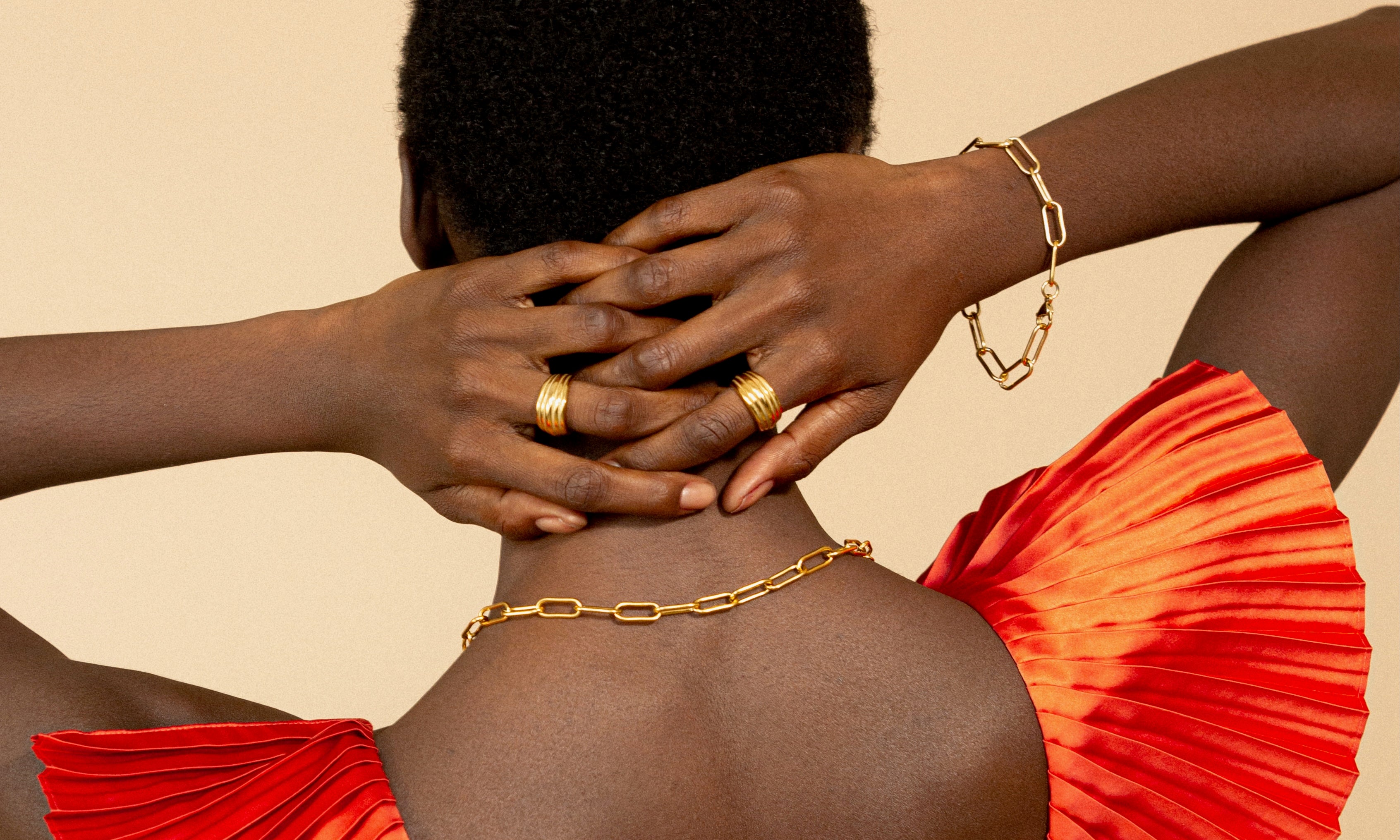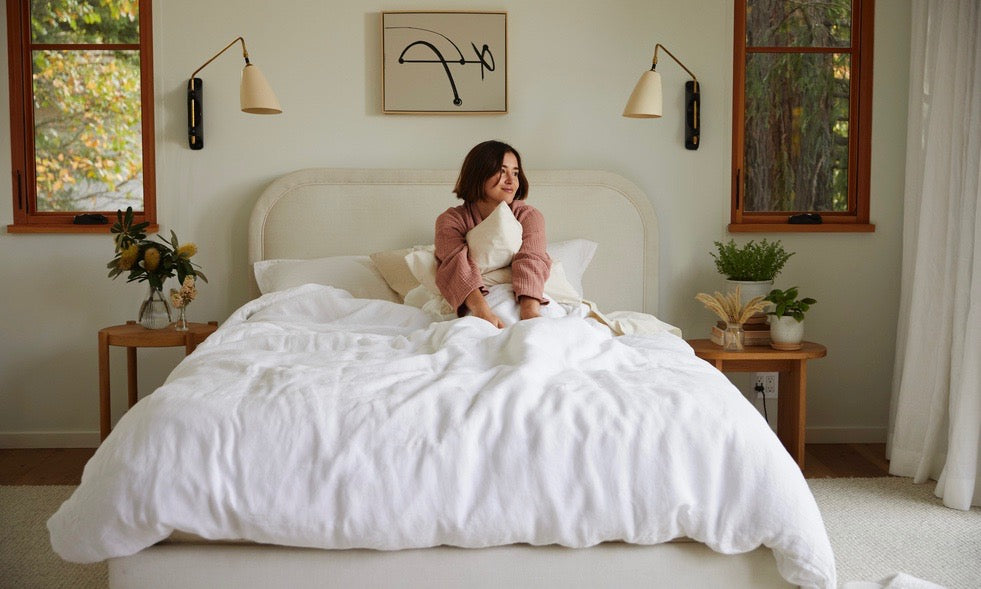
The Best Duvets for Every Type of Sleeper
You'll find a rundown of all the best duvets and duvet covers here, along with tips for choosing top-tier bedding pieces and what to look for when buying them.
If you're partial to fluffy, cloud-like bedding that keeps you comfortable and cozy but not too hot, a duvet is where it's at. Of course, not all duvet inserts are created equal. Some are undeniably better quality than others, and some are better for certain sleeping styles.
You'll find a rundown of all the best duvets and duvet covers here, along with tips for choosing top-tier bedding pieces and what to look for when buying them. First, let's go over what a duvet and a duvet cover are and the exact purpose of each.
What Is a Duvet?
A duvet is a popular type of bedspread meant to go inside a removable, washable duvet cover. It has a fabric shell stuffed with a lightweight, insulating fill material, like goose down or down-alternative fibers. The best duvets usually feature box quilting to prevent the fill from bunching up.
Duvet vs. ComforterLots of people get the terms duvet and comforter confused — understandably so. They're often used interchangeably in the U.S., and indeed, both are types of bed covers. However, a duvet insert goes inside a removable, washable cover. A comforter is designed so it can be used without a cover.
However, to be used cover-free, a comforter should be presentable on its own, meaning it'll feature a patterned design or a solid color other than plain white. Additionally, it should be machine-washable. Without a removable cover, you'll want to launder your comforter about as often as you change your sheets.
What Is a Duvet Cover?
A duvet cover is a fabric enclosure that goes over a duvet. It protects the insert from dust, sweat, spills and other residues. The cover can be removed for frequent washing, whereas the actual duvet will be laundered much less often. It should be made of a soft material like cotton or linen.
Best Duvet Insert Materials
The best duvets are typically filled with natural down or down-alternative fibers within a breathable cotton shell. Here's what to know about these materials.
Down FillDown is sourced from the undercoats of geese and ducks. It's notably fluffy and lightweight yet inherently insulating and warm. The fibers are also naturally breathable and moisture-wicking with temperature-regulating abilities.
In other words, a down duvet insert will warm up your body when you're feeling cold, cool you off if you overheat, and even help wick away sweat. These qualities make it an ideal choice for most sleepers.
Believe it or not, some of the coolest comforters are actually filled with down. But that doesn't mean they won't also keep you cozy if you run cold at night. The material is essentially the best of both worlds.
Down vs. FeathersOne thing to keep in mind is that down isn't technically the same as feathers. As noted, down is the undercoat (bottom layer) on the goose or duck, closest to the bird's skin. Feathers are the overcoat.
Down comforters, duvets and pillows are sometimes filled with feathers (or a blend of feathers and down). However, down is generally the preferred fill material for the best duvets. Not only are the fibers finer and lighter, but they also don't have the pokey quills of feathers.
Down-Alternative FillDown-alternative duvets are filled with fluffy synthetic fibers designed to mimic the naturally lofty, insulating properties of real down. This type of insert may not have the same temperature-regulating qualities, but it does an excellent job of keeping you warm and cozy at night.
Additionally, down alternative fill is a prime choice for people who want animal-free, vegan-friendly bed linens, as well as those who may be allergic to feathers or natural down. Down-alternative is also often the more affordable option.
Other alternatives to down fill include silk, cotton and bamboo viscose, though these aren't as common.
Check out our Down vs. Down Alternative Comparison Guide for more insight.
Cotton ShellThe best duvets usually have cotton shells, whether it's silky-smooth sateen or crisp and cool percale. You'll sometimes find options with polyester or microfiber shells, but a natural textile like cotton is the ideal choice.
Cotton is naturally breathable. This means air passes through the material, preventing it from trapping heat — a critical bedding quality for hot sleepers. It also has inherent moisture-wicking properties, essentially pulling sweat away from your skin, making it a go-to for those prone to night sweats.
Our Fabric and Bedding Materials Guide has more details about the highest-quality fabrics and fills.
What to Look for When Buying a Duvet Insert
If you're on the hunt for the best duvet insert, there are a few things to consider when shopping around. This includes high-quality materials, certifications, fill power, fill weight, baffle-box construction, corner tabs, top/bottom indicators, care instructions, size, price and warranty.
MaterialsAs outlined above, the best duvets typically feature a soft, breathable cotton shell filled with natural down or fluffy down-alternative fibers. These materials will provide warmth and insulation while preventing you from overheating. They also excel at wicking away sweat while you doze.
CertificationsA down comforter might be certified by the Responsible Down Standard (RDS). This ensures the fibers are sourced from live birds that are treated humanely and not harmed in the process.
The fabric shell may also carry the Oeko-Tex Standard 100 label. This textile certification tells you the material was made without upwards of 100 substances that could potentially harm you or the environment.
Fill PowerFill power tells you how fluffy and voluminous a duvet insert or comforter is. Measured in cubic inches, it's the volume of one ounce of fill fibers. A high-quality duvet will often have a fill power of at least 700 — the higher the number, the loftier it will be.
Bear in mind a high fill power doesn't necessarily indicate a warmer or heavier duvet. It really only refers to the volume, so a product with a higher number will take up more storage space but have a fluffier look and feel on your bed.
For more on this topic, see our blog, Down Comforter 101: What Is Fill Power?
Fill WeightWeight is a little different than fill power. Usually measured in ounces, it tells you the literal weight of the down or down-alternative fill in your duvet.
Fill weights for the best duvet inserts and comforters typically range from 400 to 800 ounces. In this case, the numbers are pretty intuitive. Smaller numbers usually indicate lightweight comforters, and higher numbers tend to imply the duvet is a bit heavier.
In some cases, a duvet won't list an actual fill-weight number. Instead, the bedding brand might just label the product as lightweight, medium-weight (or all-season) or heavy (sometimes called winter weight).
While a higher fill power doesn't really have anything to do with warmth, the fill weight does. As you can probably infer, a lighter-weight duvet will sleep cooler than a heavier design.
Baffle-Box ConstructionThe best duvets will feature baffle-box construction. This means the fiber-filled fabric shell is stitched into squares (sometimes called pockets), sort of like a quilt. The technique prevents the down or down-alternative fibers from bunching up, ensuring the fill is evenly distributed and that the duvet remains fluffy through years of use.
Corner TabsCorner tabs (sometimes referred to as corner loops) are often sewn onto duvet inserts. They're meant to be attached to the ties on the inside corners of the duvet cover. Securing the corners helps keep the pieces together and prevents the insert from sliding around or bunching up inside the cover.
Top/Bottom IndicatorsYour comforter may also have a small tag labeled "top/bottom" or "head/foot." This tells you which sides should go at the top and bottom of your bed. Some bedding sizes are a little more obvious. But kings, for example, are almost (but not quite) squares, which can make it hard to figure out the right orientation. If your duvet doesn't have top/bottom indicators, you might consider tying a small ribbon to one end or making a very small mark with a permanent marker.
Care InstructionsYou'll want to examine the care instructions for the duvet you're buying. Most down and down-alternative inserts are machine-washable on delicate cycles using cold or warm water. However, some call for spot-cleaning only and others may recommend dry-cleaning. A machine-washable design is generally ideal, as it's simply the most convenient.
SizeLike mattresses and sheets, duvets come in a range of bedding sizes, including twin, twin XL (extra-long), full, queen, king and California king (also called Cal king). You'll sometimes see the sizes combined, such as twin/twin XL, full/queen or king/Cal king.
If you like a fuller look and feel, think about sizing up. For example, if your bed is a queen, you can get a king-sized comforter and stuff it into a queen-sized duvet cover.
PriceComforter and duvet insert prices typically range from $100 to $1,000. That said, the best duvets are often priced somewhere in the middle, between $250 and $550 — it's definitely possible to overpay. As noted, you can expect to pay a little more for natural down than down-alternative.
WarrantyBefore buying a duvet, check to see if it comes with a warranty. The down and down-alternative bedding products from Parachute are backed by a five-year warranty. As long as you properly care for your duvet, this warranty protects your investment against defects or other issues with the design.
Best Duvet Cover Materials
The best duvet covers are most often made of linen, brushed cotton, percale, sateen or organic cotton. Get details about each fabric below.
LinenLinen is woven from flax plant fibers, which are distinctly long and strong. This makes the textile exceptionally durable and long-lasting while also allowing it to get softer over time. Not only that, but linen is naturally breathable and sweat-wicking with a lightweight, billowy quality, making it a great choice for the warmer months and people who run hot when they sleep.
Brushed CottonSome of the softest duvet covers are made of brushed cotton. The textile is finished with a combing technique to create a velvety, peach-fuzz-like surface that provides extra insulation. It's similar to flannel, but since it's only brushed on one side, it's not quite as warm and still plenty breathable. These are among the best duvets for winter months.
PercalePercale is a high-end type of cotton with a hotel-like quality. Loomed from long-staple Egyptian or Turkish cotton using a plain square weave, this fabric has a matte finish and a crisp, cool feel. The light, airy material is a top choice for people who run hot or want a more breathable duvet cover for summer.
What Is Turkish Cotton? Is It Any Good or Better Than Egyptian Cotton? Read our blog for answers.
SateenSateen duvet covers are also made of long-staple Turkish or Egyptian cotton. But instead of using a plain square weave, the fabric is loomed with a four-threads-over, one-under pattern. This gives it a silky-smooth feel and a subtle sheen similar to satin. The slightly tighter weave also makes it a bit warmer than percale and linen, which is why people often choose sateen bedding for winter or colder climates.
Organic CottonAn organic cotton duvet cover should be certified by the Global Organic Textile Standard (GOTSⓇ). This tells you the fabric was sourced from organically grown plants and made according to the independent organization's strict sustainability standards. Beyond being eco-friendly, the material is ultra-soft with a lived-in feel reminiscent of your most loved t-shirt.
What Is Organic Cotton? Our article has all the details about this earth-friendly fabric.
What to Look for When Buying a Duvet Cover
You know what to look for when shopping for the best duvets, but what about the cover? When browsing options, consider the material, certifications, care instructions, corner ties, size, whether you want just a cover or a matching set and the price.
MaterialAs mentioned above, the highest-quality duvet covers are made of percale, sateen, brushed cotton, organic cotton or linen. The best option for you will ultimately depend on your sleeping style and personal preferences.
CertificationsWhen buying a duvet cover, check if it has any certifications. The best designs will usually carry the Oeko-Tex label, ensuring all components of the product (including the raw fibers, threads and dyes) are free of potentially harmful chemicals. And any organic bedding you purchase should be GOTS-certified.
What Is Oeko-Tex? Read our blog to learn all about this important textile certification.
Care InstructionsThe proper way to care for a duvet cover depends on the material. That said, most can be washed on a gentle or normal cycle using cold or warm water and tumble-dried on low heat. But be sure to check the brand's care instructions before tossing yours in the wash.
Corner TiesMost duvet covers on the market today have corner ties on the inside. They're meant to tie to the corner tabs (or loops) of the duvet insert, helping secure the pieces together and preventing the insert from sliding around or bunching up.
SizeLike duvet inserts, duvet covers come in various bedding sizes. This includes twin, twin XL, full, queen, king and Cal king. As with the inserts, some covers are available in combined sizes, such as twin/twin XL, full/queen or king/Cal king.
Duvet Set vs. Cover OnlyYou can buy just a duvet cover, but most often, they come in sets. A duvet cover set will include the cover, plus one or two matching shams. (Twin and twin XL sets usually come with one sham, and queen and king sets come with two shams.) You certainly don't have to have a matching set, but the idea is to make your bedding look more cohesive and put-together.
PriceA nice duvet cover will cost you anywhere from $100 to $400, but the price ultimately depends on the material, size and overall quality. Since flax plants can only be grown in certain parts of the world, and due to the inherent durability of the material, linen is often the most expensive option. And of course, you can expect to pay more for a complete set than an individual cover.
Frequently Asked Questions About the Best Duvets
Find answers to frequently asked questions about the best comforters and duvets below.
Which filling is best for duvets?The best filling for duvets is either natural down (sourced from the undercoats of geese or ducks) or down-alternative. Down-alternative fibers mimic the fluffy, lofty, insulating qualities of down and can be a good option for those with allergies.
Is a duvet better than a comforter?One is not necessarily better than the other, and people often use the terms duvet and comforter interchangeably. However, many people prefer duvet inserts with covers, as you can easily remove the covers and machine-wash them as needed. A comforter without a cover is a little more cumbersome and potentially trickier to clean.
How do you put a duvet cover on a duvet?To put a duvet cover on a down comforter insert, start with the cover inside out, laying flat on your bed. Next, place the comforter on top and attach the corner ties of the cover to the corner tabs on the insert. Then, holding the top corners in either hand, turn the entire thing inside out. Shake out your duvet to fluff it, and finish by securing the buttons or zipping up the bottom.
How often do you wash a duvet?A duvet insert only needs to be washed a few times a year or once every couple of months. But your duvet cover should be laundered much more often — about once a week or so when you wash your sheets and pillowcases.
See our guide on How to Wash and Properly Care for Bedding for additional insight.
What is the best duvet on the market?Parachute carries some of the best duvets on the market. This includes natural down-filled options, as well as the best down-alternative comforters with breathable cotton shells. And each piece is backed by a five-year warranty.
When you browse the bedding collection, you'll also find high-quality duvet covers in all the best materials, including easy-breezy linen, buttery-soft brushed cotton, cool and crisp percale, silky-smooth sateen and sustainable organic cotton. All the bedding essentials you’ll find at Parachute are sustainably sourced and carry an Oeko-Tex certification for chemical safety.
If you need duvet recommendations or tips for choosing bedding materials or colors, a Parachute design consultant is here to assist. Schedule your free virtual consultation today!
Read Next:
What (and Who) Is The Parachute Design Services Team?
The Right Bedroom Color for You
Sateen: Know Your Bedding Like a Designer
Brushed Cotton: Know Your Bedding Like a Designer
Percale: Know Your Bedding Like a Designer
Linen: Know Your Bedding Like a Designer
External Sources:
1. Gao J, et al. (2007). Structures and Properties of the Goose Down as a Material for Thermal Insulation. Textile Research Journal. 77. 617-626. 10.1177/0040517507079408.
2. Kim, Hyun-Ah. Moisture Vapor Permeability and Thermal Wear Comfort of Ecofriendly Fiber-Embedded Woven Fabrics for High-Performance Clothing. Materials (Basel, Switzerland) vol. 14,20 6205. 19 Oct. 2021, doi:10.3390/ma14206205
3. Textile Exchange. Responsible Down Standard. The Responsible Down Standard aims to protect ducks and geese used for down. Web.
4. Oeko-Tex. Oeko-Tex Standard 100. What Does the Label Mean? Web.
5. Akin DE. Linen most useful: perspectives on structure, chemistry, and enzymes for retting flax. ISRN biotechnology vol. 2013 186534. 30 Dec. 2012, doi:10.5402/2013/186534
6. Trompiz R. (2020) French farmers may halve flax fibre area as demand for linen shrinks. Reuters. Web.







